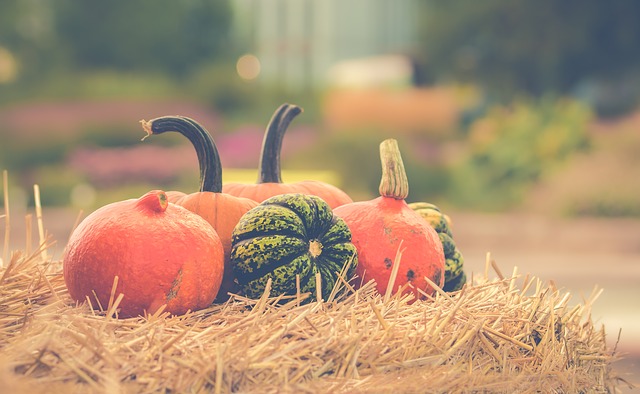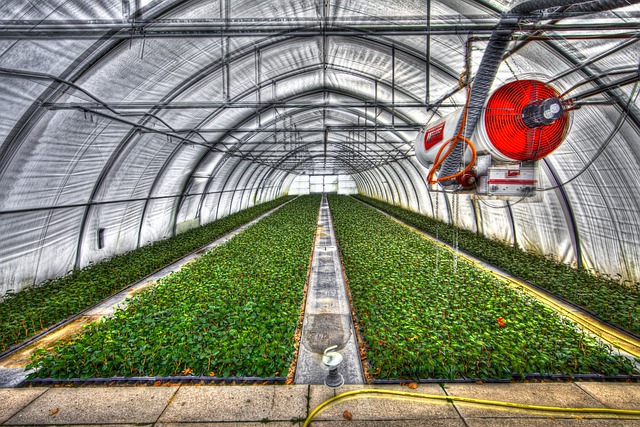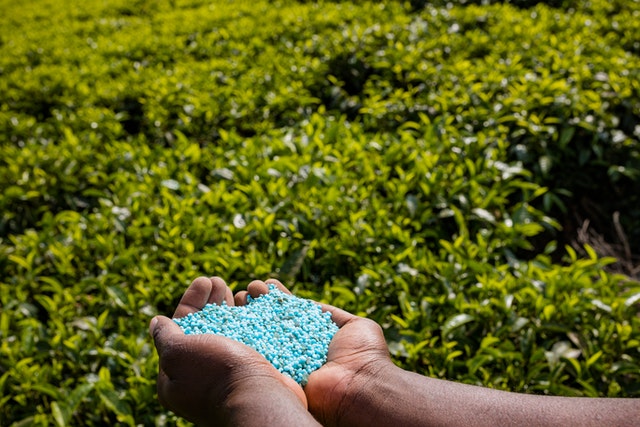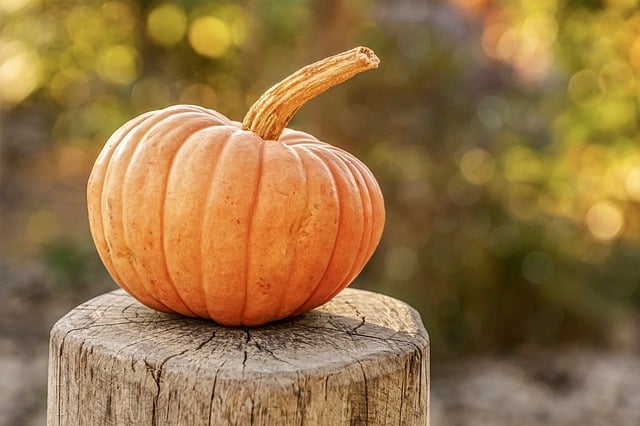Need help figuring out How Much Does A Pumpkin Weigh?
Pumpkins have been widely used, especially in North America, for over 5000 years. Besides being a nutritious and delicious fruits, Americans use pumpkins to decorate during Halloween.
Also, pumpkun cake is a common delicacy during Thanksgiving festival. As you can image, pumpkin is a top-sought fruit and its demand continues to soar.
Though pumpkin’s demand is high, many farmers, gardeners, retailers, super marketers, etc., are still curious and confused to answer one question accurately: how much does pumpkin weigh? The following article examines the different factors that affect pumpkin size and weight.
Most people prefer to grow them in their yards. These easy-to-maintain plants need sizable growing space and plenty of water. If you ensure 75 to 100 frost-free days, harvesting one is a breeze. Pumpkin growers measure and weigh them from time to time to ensure their growth rate is healthy enough. If they find any discrepancies, they assess the factors responsible and fix the issue.
Knowing how much the average pumpkin weighs makes it easy to check if the growth is proper.
How Much Does A Pumpkin Weigh?

Pumpkins have different sizes, and according to that, weight differs. It requires different times, the quantity of water, soil, space, nutrition, fertilizer, etc., to grow in different varieties, which then determine the size & weight of each Pumpkin.
It is not grown in one size or with one purpose. With the change in size, the purpose behind it changes too.
You can find a varied range of pumpkins from mini to giant size. A jack-o-lantern, the carving pumpkin is 20 to 30 lbs. A mini one weighs about ¼ lb. Usual pumpkins used for eating are medium to small-sized, weighing around 5 to 10 lbs.
The giant pumpkin weighs around 100 to 300 lbs. but can go up to 1000 lbs. In 2021, the world’s most giant pumpkin weighed 2,703 lbs. grown by Stefano Cutrupi from Italy. It was also recorded in the Guinness Book of World Records as the giant pumpkin.
All pumpkins are edible, but some are well suited for decoration, and few taste good to eat. Their weight not only depends on their variety but also on the nutrients and water they receive during the growth.
There are three sizes in which pumpkins are grown.
- Small pumpkins weigh 5 to 7 pounds and take 110 days to grow. Small pumpkins are majorly used to make pumpkin pie.
- When the word pumpkin comes up, usually a medium pumpkin is assumed and weighs 15-20 pounds, takes more time to grow than a small pumpkin, and is widely famous for making jack-o-lanterns.
- Large pumpkin weighs between 25 to 30 pounds and takes 90-115 days to mature. It has different names like Gladiator, Early King, and some spooky names such as Bunch-o-Warts.
Pumpkins require care because they can catch sunlight and pests easily if the light is poor, too much fertilizer, bloom time, and reduced pollinating insect activity—a secret ingredient for taking care of your fruit.
Varieties Of Pumpkins And Their Possible Weight
Pumpkins such as Jack-be-little, Baby Boo, and Apprentice weigh below 1 lb. and take around 90 days to grow till harvest. Baby Pam mini pumpkin takes about 100 days to grow and weighs about 3 to 4 lbs.
Small-sized pumpkins such as Early Abundance and Small Sugar can weigh up to 7 lbs. Cannon Ball is about 5 lbs. Pumpkins like Musquee De Provence and Casper weigh 15 lbs. The other medium-sized pumpkins that weigh around 20 lbs. are Connecticut Field and Secretariat.
Gladiator, Bunch ‘O Warts, Howden, and Early King are giant variety pumpkins weighing around 25 lbs. Coming to giant-sized pumpkins – Growers Giant is 50 – 200 lbs. Big Max weighs about 100 lbs. Prizewinner, Atlantic Giant, can range from 100 – 300 lbs. and above.
Tips For Growing Perfect Pumpkins

Though pumpkins grow well when appropriately tended, these tips help you grow perfect versions of them.
- Pumpkins require heavy feeding of nutrients through compost, manure, and fertilization.
- Early plants require nitrogen fertilizer, whereas before blooming period needs phosphorus.
- Focus the energy on fruit by trimming off the extended vines and new blooms after the fruits are formed.
- Gently turn the fruit from time to time without damaging the stem or vine for even growth on all sides.
- Put a thin board below ripening pumpkins to protect from insect damage and decay.
Factors That Determine How Large A Pumpkin Can Grow
A few essential factors that play a significant role in determining the size of a pumpkin are listed below.
- Spacing – 50 to 100 sq ft of space is required from plant to plant for the vine to grow enough to support the pumpkin.
- Pruning the Vines – secondary and tertiary vines development should not be encouraged as they not only overcrowd your garden but also take up nutrients unnecessarily. Pruning them keeps the plant area in check and helps the fruit grow optimally using available nutrients.
- Remove extra blooms – Once a few healthy fruits start forming, remove the blooms on the plant, including the buds, to direct the energy to the fruits.
Burying Pumpkin Vines – a buried vine can develop roots that keep the plant steady in the place and help absorb more nutrients from the soil. As a result, enormous pumpkin growth is possible.
How To Have The Best Pumpkin In Town?
Follow the below guidelines to have the best pumpkin in the town:
1. Placing The Pumpkin

It is necessary to plant seeds between 10-15 meters in a row and 5-6 meters apart to grow properly during the season.
2. Vine-Pruning
Pumpkins are developed on the base of veins. Cut down all unnecessary veins. Only allow main veins to grow 10 feet long. After Pollination, if you want a giant pumpkin, remove all buds and flowers from veins so that it can get all the energy to grow.
3. Burying The Vines
To increase the size of the pumpkin, burying the vines is the best technique. The best area to bury is to find the place where secondary veins are developed and then find the root to bury it in the soil. Water the plant regularly, and in no time, the plant will grow and go into the sand.
4. Pumpkin Fertilizer

The best way to grow pumpkin is by fertilizer. First, put rotten manure in the ground before planting. Then, when the pumpkin grows, apply nitrogen fertilizer, for example, blood meat, to the plant weekly. The best tip is to use potassium sulfate.
So, how much do pumpkins weigh? The answer might be, the better you use potassium, the more it will weigh.
See a similar post: How Much Does One Potato Weigh?
Summary
Now, how much does a pumpkin weigh? The simple answer is that it depends upon the size & weight, space, time, fertilizer, water, sunlight, soil, and the most important thing is the purpose of pumpkin. It weighs approximately from 5 lbs to 30 lbs depending on size.
The Guinness World Record for giant pumpkin was recorded around 2625 lbs. The pumpkin was grown by Mathias Willemijns and won the 2016 European Giant Pumpkin Contest. If you want to know the trick, click here.
Frequently Asked Questions
Which Pumpkin Size Is Good For Cooking?
Pumpkins of Pie or Sugar variety weighing about 3 to 8 pounds are more flavorful than larger ones. More giant pumpkins are used for carving—five-pound fresh pumpkin yields 4 to 4.5 cups of pulp. A large part of pumpkins used for cooking gets discarded in peel and seeds.
So, it is helpful to know how much usable part is obtained from a fresh pumpkin for cooking to help you buy accordingly. Also, recipes provide measures in cups rather than weight, making it more confusing.
The above comparison can give you an approximate estimate of how much of an edible part to expect from a fresh pumpkin.
How To Slice A Pumpkin Easily?
First, scrub the pumpkin gently, taking care not to bruise it and wash it thoroughly. Use a large chopping board and put a damp cloth under it to keep moving. Since pumpkins have thick skin, you should use a proper knife.
A heavy knife with a sharp edge is ideal for this purpose. Be careful while cutting, as you can easily hurt yourself in this process. Cut the pumpkin lengthwise in half, starting from the stem and base. Remove the seeds and stem.
Peel the skin or leave it on based on your preference. Now slice the pumpkin halves horizontally into equal pieces for even cooking.
How Long Does It Take For A Pumpkin To Mature?
On average most pumpkins are ready by 100 days. However, going into details, mini pumpkins grow entirely within 90 days; small ones need 100 days. Medium-sized ones take about 110 days, and large varieties need about 125 days.
Some varieties might take a few days, but this is a comprehensive picture of the pumpkin growth period. Once they reach their maturity, they are ripe and do not grow further. Their skin color is dark and bright. Their peel is hard, and they make a hollow sound when you tap them.
How do you guess how much a pumpkin weighs?
Out of many, one of the ways is to measure the pumpkin from ground level. But, as it is circular, you must measure from stem to blossom end and then from one side opposite the ground.
How much do 24 pumpkins weigh?
Pie pumpkins, commonly known as Baby Pam, Sugar, or Spookie, which is approximately the size of a Grapefruit, weigh around 3-4 pounds, available loosely in 1/19 bushes and a 24” bin. The lantern pumpkin is around the size of a volleyball. On average, they weigh around 7-11 pounds.
How much do different types of pumpkins weigh in the UK?
The UK also has different types of pumpkins. A small pumpkin weighs around 600 gms to 1.5 kg. It is not easy to grow there as it is too cold, especially in May. However, the smaller ones are used for decoration during Halloween times.
- Mars weighs between 1.5 kg to 3 kg.
- Harvest Moon weighs between 2.5 kg to 4 kg
- Racer weighs from 3 kg to 7 kg
- White pumpkin weighs 4-6 kg.
- Munchkin pumpkin survives until Christmas time. The stems are thin and sturdy for easy harvest and less breakage in packaging.

Hey, I’m Lisa and I’ve been an avid gardener for over 30 years. I love writing, talking and living in the garden! Feel free to connect with me on my socials below

